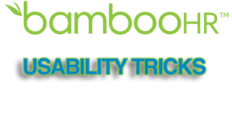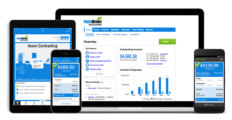You can brainstorm using the usual collaboration tools like VoIP, chat and project management software. Sure, they let you communicate anywhere and anytime, but these are not designed primarily to follow and correlate ideas. For that, there are brainstorming apps and mind mapping software designed to juice out the best ideas for execution.
If you’re new to this software type–or running brainstorming sessions–you’re better off trying a free tool to walk you through the exercise. We have prepared a list of the best free brainstorming tools that we believe will help you consolidate ideas and flesh out a clear output. Most of these are SaaS small business apps, so manage your expectations if you have enterprise-level requirements.
We will be highlighting the features that make each of these unique, so you can pick the best one for you. Also, you’ll be able to distinguish the free apps from each other. Some of them are designed for solo use, while others are for collaboration. Some put emphasis on mind mapping, while others on mobility.

What are the Best Free Brainstorming Apps?
Brainstorming can be done both in groups and as an individual. It is a creative problem-solving technique that is very forgiving. Participants throw out ideas that can be a little off the wall hoping to find a very ingenious solution. These can be just reigned in later. But whether you do it with others or yourself, it is preferable to have a board or even toys to play with–tools that will help you think in more abstract ways. The brainstorming area should also be accommodating and the atmosphere light. This is something that a good yet free brainstorming app help recreate.
Many of us who brainstorm with others use a board to jot down ideas. We pin pictures, charts, and notes. We even draw shapes, make graphs, diagrams, and connect them with arrows. This instinct to scribble, post, and connect concepts is catered to by digital brainstorming aids with collaborative workspaces. They range from digital whiteboards to mind maps. These are also pretty useful even when you brainstorm alone.

It is good to note that some researchers and professionals find solo brainstorming is better. Many believe that group brainstorming is just a waste of time. But then again, this depends upon the situation. If you ask us, it really depends upon who you are with and what the brainstorming session is for. There is no categorical answer.
Group brainstorming tools are, in essence, a subtype of collaboration software. They usually come with admin controls, access roles, and a shared dashboard. Just like individual online brainstorming tools, you can access them from your browser or through an app using multiple devices. In this way, you can collaborate with different people wherever and whenever you need them. Individual brainstorming platforms will have similar useful tools that group brainstorming ones except for a collaboration function. You can do your brainstorming alone and just share it with others later.
10 Best Free Brainstorming Software
1. Mindmeister

Mindmeister is a mind map-based collaborative brainstorming tool. The free version allows you to collaborate with an unlimited amount of people but you only get 3 mind maps. The collaboration feature is included but if you want more mind maps and features, you have to upgrade to a paid plan. The free version allows you to store designs and files such as PDFs. Your maps on Mindmeister get updated in real-time across all devices. It is also accessible to other users allowing for a real collaborative brainstorming session.
The free version seems to be okay for a limited time as you can only have 3 mind maps. But if you don’t have many projects, you can just reuse the maps you already have.
Should you want to upgrade, the best plan for teams (and individual use) is said to be the Pro plan that costs $8.25 per user a month. It includes custom themes for maps and export options. This allows for multiple team members and seems to be perfect for small to medium teams.
Key Features of Mindmeister
- Real-time collaboration
- Mind map-based UI
- Three free mind maps
2. Coggle

Coggle is another brainstorming tool for mind map enthusiasts. The free version allows for collaboration and is perfect for occasional brainstorming. It also includes unlimited image uploads, unlimited public diagrams, and full change history. The user interface and graphics are neatly designed. It even includes multiple starting points so you and your team can map several related topics in a single space. Not only that you can add images and floating text, but you can also add branches and loops to model advanced relations and processes.
Its free version may be enough for occasional brainstormers who want real-time collaboration. There is no harm in trying.
Once you’re ready to scale, the Awesome plan (personal and professional version) starts at $5 per month. It allows for a larger degree of customization like more control on line paths. It also includes more item shapes.
Key Features of Coggle
- Mindmap tool
- Unlimited public diagrams
- Real-time collaboration
3. Lucidchart

Online brainstorming is all about visual communications. One way to get ideas across is through charts and diagrams. LucidChart is an excellent way to build these visuals. What’s also cool about it is that you build charts with data. Yes, you can import and even connect live data for your diagrams. But, its free version is only available for an individual. This means, the free tool, is essentially an individual brainstorming platform. Collaborative features are only available for paid plans. Although this is the case, you get access to a free shape library and access to all templates.
The available templates are useful in a wide array of business processes from IT to sales. If you are in project management, you can create a Gantt chart. If you are in product management, you can build website mockups. LucidChart integrates well with Jive, Google Drive, and Atlassian Confluence.
The Pro plan for single users costs $9.95 per month paid quarterly.
Key Features for Lucid Chart
- Free templates
- Build charts with data
- Easy to use
- Build complex diagrams
4. Mind42

Mind42 is another collaborative visual thinking platform. The name is not pronounced as “mind forty-two” instead it refers to the collaborative function as intended to be pronounced as “mind for two”. The platform is totally free and fully runs on your browser. Maybe one downside is that it is ad-supported. It is not like other free platforms that prefer donations to keep them afloat.
The platform allows you to create private mind maps by default. You can create nodes and connect them with arrows. Each object can be labeled and you can even add pictures. Also, you can add shapes and links as well. The user interface is not the prettiest one out there though. There is much left to be desired in this department. But, if you are looking for something functional and browser-based, there is no harm in trying it out.
You can collaborate with people by allowing them to edit your maps. You also have the option to share your maps publicly for the world to view and even export it in several file formats.
Key Features of Mind42
- Straightforward user interface
- Export to files
- Collaborate via invites
5. Popplet

For personal brainstorming use, the free version of Popplet might be enough. It is a straightforward application that, as many other brainstorming tools online are, is mind mapping-based. It is targeted at students, educators, and businesses. The user interface is very straightforward with drag-and-drop controls. It also has a corresponding app which is only exclusive to Apple users. If you are on Android, you can still access it via your browser but there is no app for it.
Essentially, Popplet is a mind mapping tool perfect for people who prefer maps than any other method. But, if you want a more flexible application, this may not be for you. However, collaboration is pretty easy to do with the tool. If you are an educator, for example, you can let the class participate in digital activities. Students can create presentations using the materials that were brainstormed in Popplet. There are many uses for it. Your creativity is the limit.
Key Features of Popplet
- Real-time collaboration
- Easy to use
- Light user interface
- Drag and drop controls
6. Stormboard

Stormboard is an online brainstorming software and more. In its free version, it is a powerful brainstorming software for individuals and a small team. You can access it using any browser, no installation required. It features an infinite canvas for a single storm (AKA workspace) so you never run out of space. Also, there are templates that you can choose from but you can, of course, start from scratch. Your team will be able to put up ideas on whiteboards and use sticky notes. You can add files, texts, and even videos among other media. Plus, it is very easy to use.
The Personal plan is great for individuals and small groups. It includes 5 open storms and 5 users per Storm. This means you can invite a total of 20 people; four different collaborators for each storm. Furthermore, you are able to assign tasks and even get your team to vote on ideas. It is also integrated with communications software.
Premium plans include advanced reporting, unlimited storms, live co-editing on Office 365, and multiple administrators among others.
Key Stormboard Features
- Easy to use
- Instant meeting notes
- Built-in business processes (templates)
7. Wisemapping

Wisemapping is a completely free open-source software being used for brainstorming. The overall concept centers around mind mapping on private and public workspaces. Like other apps featured here, Wisemapping is completely web-based. And, like what the name suggests, its also mainly a mind mapping tool that people use for brainstorming. What’s great about this platform is it is totally free and can make complex mind maps. There is also a vibrant user community for knowledge support. The user interface though is not the best out there. Even so, it is a straightforward platform.
Another nice thing about it is that you can embed it in blogs or on any webpage. You can also post a link to it in your project management tools and invite colleagues to brainstorm with you. It is basically a collaborative mind mapping tool and if you like your brainstorming strictly done in a mind map environment and forever free, Wisemapping is your bet.
Key Features of Wisemapping
- Forever free
- Open-source
- Private and public workspaces
8. Conceptboard

Conceptboard is a collaborative digital workspace that teams can use for brainstorming. It features an unlimited workspace that can house the ideas that your team comes up with. It mainly features a whiteboard-based interface. Its free version allows for unlimited users and boards for an unlimited period of time. The only limit is that you can only put 50 objects on each board. Also, it allows for a 500MB file storage with a 10MB max upload size.
You and your team can draw, add sticky notes, shapes, and mark content on these cloud-hosted boards. This means your boards are accessible via any device provided you have an internet connection. Furthermore, the whiteboards expand as you add content as well. You can even add screenshots, documents, and images too. Also, it supports different file types not limited to PDF, PPT, and JPEG files. With these plus its intuitive UI, Concenptboard makes collaborative brainstorming easier.
Integrations include Dropbox and Salesforce Chatter among others. Paid plans start at $7 per user per month. They include additional features such as audio and video calls, screen sharing, and history. Some enterprise Conceptboard users are SIEMENS, Oracle, and Wiley.
Key Features of Conceptboard
- Whiteboard-based interface
- Intuitive UI
- Real-time collaboration
- Unlimited users, unlimited boards
9. Miro

Miro, formerly called RealtimeBoard, still retained a whiteboard-based user interface but built more features around its original product. Now, Miro has more features for ideation and brainstorming. Miro affords you and your team an infinite canvas where each participant can use. It includes popular brainstorming tools like mind mapping, affinity map, and a ‘5 whys’ feature. Plus there are 50+ templates that you can choose from. The free plan includes unlimited team members with 3 editable boards. Unlike other free versions of other platforms, Miro’s free offering includes real-time collaboration for teams.
The platform also allows you to use sticky notes, draw freeform, and use shapes among others. The free version comes with core integrations including OneDrive and even Trello among others.
Paid plans include premium features such as private board sharing, projects, and unlimited boards. These advanced plans are priced starting from $8 per user per month billed annually. Miro users include professionals from companies like Netflix, Logitech, and Upwork.
Key Features of Miro
- Embedded video, commenting & chat
- Mouseover collaboration
- Mind mapping feature
- Affinity map module
10. Milanote

Milanote is targeted mainly for creative professionals but marketers and UI designers enjoy using it too. If you are a designer, illustrator, or photographer, Milanote could be the best brainstorming tool for you. It can be both an individual and group brainstorming platform. You can collect your ideas in it and even track your progress. Creative teams love Milanote’s online whiteboard capability.
The main idea is that you start out with a private board that you can use to explore your creativity. You can drag and drop files and have access to many read-made templates. When done, you can share your work with your team or clients. Sharing options include read-only links and secret links. Also, the boards you share contain commenting tools for easy feedback. You will able to access the platform using any browser from any device because it is cloud-based.
The free version includes unlimited boards but they are limited in terms of notes, images, and links. You only get a hundred but a hundred can be enough. You also get free 10 file uploads.
The paid plan costs $9.99/user/month billed annually. It includes everything in the free plan only you get unlimited notes and upload files. Plus, you get to search boards & contents as well.
Key Features of Milanote
- Dozens of built-in templates
- Real-time sync between devices
- Simple commenting tools for discussion
- Track tasks with a to-do list
Best Free Brainstorming App for Different Needs
So, what is the best free brainstorming platform for you? Certainly, it depends on what you need it for. For example, if you are a creative professional, Milanote might just fit your purpose. It offers a whiteboard-based workspace where you can build mock-ups and improve on your designs. If you are an educator, Popplet can be a good tool to facilitate brainstorming and reporting for your students. Do you work in a team? Stormboard or Miro may capture how a real-time collaborative brainstorming session for you. If you are a mindmap enthusiast, free tools such as Mind42 and Wisemapping may just do the trick.
But, if you have a general need for a brainstorming app and want one that is robust yet flexible, we recommend Mindmeister. It allows for solo and collaborative brainstorming and scales to premium features. Furthermore, its visualizations lend to your brainstorming stunning presentations, plus it has a built-in project management feature (premium) should your concept exercise turns to a full-blown, high-value initiative.
Meantime, it is good to note that if you really want to stick with free plans and apps, you can also use a platform stack. What we mean by this is that you improve communications in your real-time workspace collaboration by having a video conferencing software up as well.
There are many studies and differing views out there about brainstorming. Interestingly, one that should catch your attention though is that some have found online brainstorming to be better than an in-person session. The reasons for this can include shyness, scarcity of tools, and access to proper information. Some people are understandably shy. Therefore, they contribute in the best way they can when they can be anonymous. Some people contribute better when they have visual tools and have access to information (the internet). Virtual brainstorming is not the best way to move forward with everything. Also, it is not for everyone. But, it might help you from time to time depending on your tasks. So, try one or more applications presented above if you would like to see whether virtual brainstorming is effective for you.
Key Insights
- Collaboration Focus: Many of the listed brainstorming apps, such as Mindmeister, Coggle, and Stormboard, emphasize real-time collaboration, allowing multiple users to contribute simultaneously.
- Mind Mapping: Tools like Mindmeister, Coggle, and Mind42 prioritize mind mapping, which helps visualize connections between ideas, making it easier to organize thoughts and develop complex concepts.
- Whiteboard Interfaces: Apps like Miro and Conceptboard use a digital whiteboard interface, which replicates the traditional brainstorming environment, allowing for a more intuitive and flexible idea-sharing process.
- Template Availability: Several tools, including Lucidchart and Milanote, provide a variety of templates to help users quickly start their brainstorming sessions and tailor them to specific needs like project management, design, or education.
- User Accessibility: Most apps are web-based, meaning they can be accessed from any device with an internet connection. This flexibility is crucial for remote teams and individual users who work across different devices.
- Free Plan Limitations: Free versions often have restrictions, such as limited mind maps in Mindmeister or a cap on the number of objects in Conceptboard. Users need to evaluate if the free plans meet their needs or if upgrading is necessary.
- Unique Features: Each app offers unique features that cater to different brainstorming styles. For instance, Miro provides tools like affinity mapping, while Milanote is tailored for creative professionals with built-in templates and commenting tools.
FAQ
- What is the best brainstorming app for collaborative mind mapping? Mindmeister and Coggle are excellent choices for collaborative mind mapping. They allow multiple users to work together in real-time, creating and editing mind maps simultaneously.
- Which brainstorming tool is best for visual communication and data integration? Lucidchart is ideal for visual communication and data integration. It allows users to create charts and diagrams connected to live data, making it useful for various business processes, from IT to sales.
- Are there any completely free brainstorming apps? Yes, Wisemapping is a completely free, open-source brainstorming tool that allows for both private and public workspaces, making it suitable for collaborative mind mapping.
- What is a good brainstorming tool for creative professionals? Milanote is highly recommended for creative professionals such as designers, illustrators, and photographers. It offers a whiteboard-based workspace, built-in templates, and simple commenting tools for discussions.
- Which app is best for educators to use with students? Popplet is a great tool for educators. It offers a straightforward, mind mapping-based interface that allows for real-time collaboration, making it easy to facilitate brainstorming and reporting for students.
- How do free versions of brainstorming apps generally differ from paid versions? Free versions often have limitations such as a restricted number of mind maps (Mindmeister), limited storage or objects per board (Conceptboard), or lack of certain collaborative features (Lucidchart). Paid versions typically offer expanded features, more storage, and greater customization options.
- Can these brainstorming tools integrate with other software? Yes, many of these tools offer integrations with other software. For example, Lucidchart integrates with Google Drive and Atlassian Confluence, while Miro offers integrations with OneDrive and Trello.
- Which brainstorming tool provides the best support for creating detailed diagrams and charts? Lucidchart excels at creating detailed diagrams and charts, offering a wide array of templates and the ability to connect diagrams to live data.
- What are the benefits of using a whiteboard-based brainstorming tool? Whiteboard-based tools like Miro and Conceptboard provide an intuitive and flexible environment that mimics traditional brainstorming methods, allowing users to draw, use sticky notes, add shapes, and collaborate in real-time.
- Is online brainstorming more effective than in-person sessions? Online brainstorming can be more effective in certain situations, such as when participants are shy, require access to digital tools, or need information from the internet. It offers flexibility and can be more inclusive, allowing anonymous contributions that might not occur in an in-person setting. However, its effectiveness can vary depending on the task and the team.


























Brilliantly helpful ! Thank you !
About 50 years ago, ( when retail computers ( Amstrad etc) had TINY memories ) someone came up with a terrific programme which they had actually called ‘Brainstorm’.
It allowed you to enter individual lines of text which then instantaneously cross-referenced with other lines of text which had matching elements in lines that you had earlier entered.
Additionally, you could arrange these entries in hierarchical order ad infinitum, grandparent-parent-child-grand child.
I’ve been looking for it ever since !
Leave a comment!